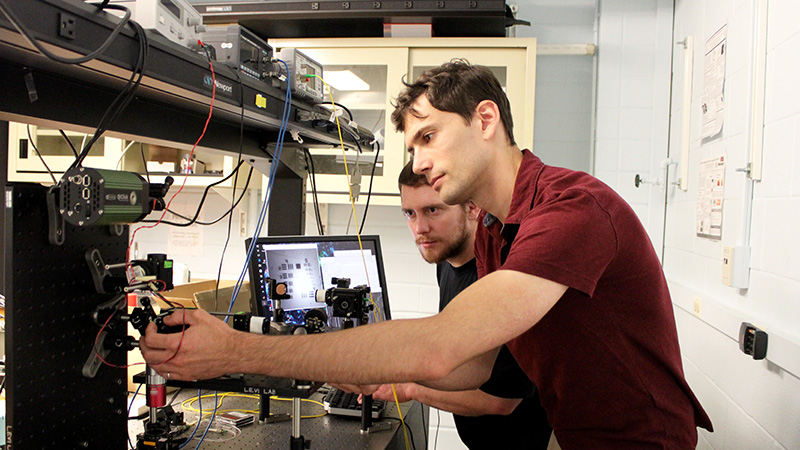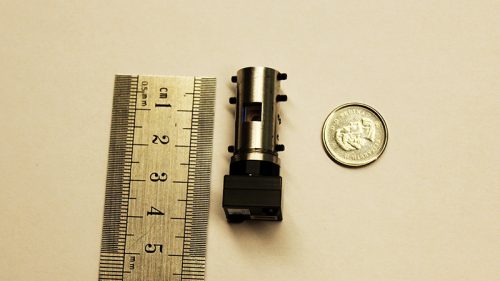
August 22, 2016
Luke Ng
A team of researchers from the University of Toronto, Sunnybrook Research Institute and the University Health Network’s Krembil Research Institute have developed a miniature microscope—about the size of a AAA battery—that can be used to peer into a rodent’s brain during an epileptic seizure. The technique could offer insights into what causes epilepsy, and lead to more effective treatments.
More than 15,000 Canadians are diagnosed with epilepsy each year. Of these, about half are due to unknown causes. Long-term drug therapy can treat the symptoms of epilepsy, but there is currently no cure.
A common challenge scientists face when studying epilepsy in rodents is the ability to monitor their brain function while the animal is awake and freely moving. Existing methods require the animal to be either physically immobilized or sedated with anaesthesia. But the drugs used for sedation also affect brain function, making the study of disease challenging, while physically immobilizing the rats limits the ability to image brain function corresponding with motor behaviour.
“We wanted to address this problem by developing a solution that would be minimally-invasive and allow for concurrent observations of brain activity and brain diseases over a period of time,” said senior researcher Ofer Levi, a professor of biomedical and electrical engineering at the University of Toronto.

To achieve this, the research team first designed and built a scaled-down optical microscope comprising of three components: a skull adapter plate, an imaging tube and a laser light source. The microscope measured 40 millimeters in length and 12 millimeters in diameter, or about the size of a AAA battery.
Then, the light source was optimized to fit several bright laser diodes, similar to a laser pointer but with different colors, in one small portable button-sized package. The diodes provide the ability to rapidly change the illumination mode from acting as a bright lamp to performing like a coherent laser. This was a key contribution that allowed the researchers to track changes in brain physiology during a seizure.
The weight of the entire device, including the base plate, was 15 grams, representing less than five per cent of the animal’s total body mass.
To image the brain’s surface with the microscope, the team surgically removed a small piece of the rat’s skull and implanted a cranial glass window in the opening, and affixed the microscope’s skull adapter plate on top of it with surgical glue and dental cement to allow the device to be attached and removed at will.
“A lot of attention went into minimizing the size and weight of the microscope and optimizing the surgical procedure for the cranial implant,” said lead researcher Iliya Sigal (EngSci 0T8), a PhD student in Professor Levi’s lab at U of T. “We had to ensure that the device was small and light enough to avoid discomfort and allow normal behaviour patterns without anaesthesia, while also being able to image the brain over several weeks in the same animal.”
Sigal and his colleagues were able to use their novel microscope to make a series of observations over a period of six weeks. The team was able to successfully record the brain during seizures and study its blood flow and metabolism without anaesthetic disruption. Their results were published on August 22 in the journal Biomedical Optics Express.
“This new tool allows us to measure critical changes in key biochemical and neurovascular parameters over a longer period of time, giving us greater insight into pathogenesis and possible treatment outcomes,” said senior author Dr. Peter Carlen, an epilepsy program physician at the Toronto Western Hospital and head of the Fundamental Neurobiology Division at the University Health Network’s Krembil Research Institute. “This technology could pioneer implantable, wireless devices for monitoring human brain functions, allowing us to build disease inhibitory strategies or ‘early warning’ systems, particularly for epilepsy patients.”
More information:
Jessica MacInnis
Senior Communications Officer
The Edward S. Rogers Sr. Department of Electrical & Computer Engineering
416-978-7997; jessica.macinnis@utoronto.ca